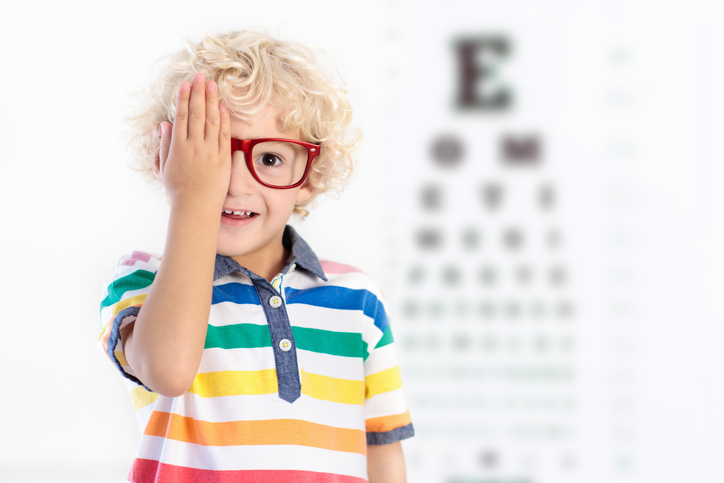 |
| In this study, patients younger than 22 with ADHD had an increased prevalence of 11 of 16 measured visual conditions, some of which included strabismus, nystagmus, myopia, astigmatism and subjective visual disturbances. Photo: Getty Images. |
In recent years, a growing body of research suggests a link between attention-deficit/hyperactivity disorder (ADHD) and various health problems, including certain ocular disorders, though the influence of medication regimens on these associations remains murky. Taking this variable into account, a new study looked at the prevalence of 16 unique vision disorders among children and adolescents with ADHD compared to their non-ADHD peers. While the researchers did observe a higher occurrence of visual disorders in the ADHD cohort, they concluded that neither medication use nor misdiagnosis appeared to confidently explain the association.
The large study included data on over one million individuals under 22 years old. The cohort was divided based on ADHD status (684,131 patients with ADHD and an equal number of matched controls) and medication regimen. The prevalence of the following vision disorders was then compared between groups: strabismus, astigmatism, myopia, hypermetropia, anisometropia and aniseikonia, presbyopia, amblyopia, subjective visual disturbances, diplopia, visual field defects, color deficiencies, legal blindness, optic nerve disorders, glaucoma, non-age-related cataracts and nystagmus.
The data showed that patients with ADHD were more likely to be diagnosed with all visual disorders than their non-ADHD peers. Those taking ADHD medication were more likely to have 13 of the 16 visual disorders, with higher odds for those taking non-stimulants. Patients on stimulant medications had a significantly increased risk in seven of 16 outcomes, while those on non-stimulant medication had significantly higher rates of all measured disorders.
The researchers point out in their paper that this finding “supports other medication-based ADHD research into medical comorbidities, which suggest that stimulant medications tend to mitigate the impact of ADHD on certain disorders.” They add that while non-stimulants are typically considered the “safer” medication for children with ADHD, “within the specific intersection of ADHD care and ophthalmology, our findings support the appropriate use of stimulant medication and indicate the need for further discussion into the comparative use of stimulant and non-stimulant medications for ADHD.”
In the medication subgroup analysis, however, the researchers found that the use of any ADHD medication only mildly increased the likelihood of visual disorders compared to the absence of medication, suggesting that this factor may not contribute to the increased prevalence of these ocular comorbidities in ADHD patients.
The study data also contradicted the misdiagnosis hypothesis, which suggests that “some individuals with ADHD and visual disorders do not truly have ADHD, but rather experience some of the symptoms like inattention due to an inability to adequately see the object of attention,” the researchers explained. They noted that this may be true in isolated cases; however, considering that this study found 50,000 more individuals with ADHD diagnosed with visual disorders than matched peers, it’s unlikely that large of patient population was misdiagnosed.
An important question surrounds the association between medication use and visual impairment in young ADHD patients, the researchers propose: “Are individuals with ADHD without medication use truly experiencing lower rates of visual disorders, or being diagnosed less frequently?” Because the evidence suggests it’s unlikely the medications themselves increase the risk of visual disorders, that leaves a few alternative hypotheses on the table.
“Firstly, as individuals not requiring ADHD medications commonly experience less severe symptoms, it could be that their visual disorders are subclinical and less obvious than individuals requiring stimulant medications,” the researchers explained in their paper. “Alternatively, the prescription of medications for ADHD requires regular contact with physicians and other providers, which may lead to an increased rate of visual disorder diagnosis even if the underlying prevalence is the same.”
While this is one of the largest studies to date to evaluate the association between ADHD, related medications and visual disorders, its findings suggest the need for longitudinal studies to follow patients with ADHD and compare their visual outcomes over time. For now, the researchers suggest to eyecare providers that “it may be worth asking the patient specifically about ADHD and associated medications. [These] results highlight the significance of considering ADHD as a potential factor in the presentation of various visual disorders, and vice versa.”
Choudhury RA, Adducci AJ, Sarwar H, Hale EW. Researching eyesight trends in ADHD (RETINA). Journal of Attention Disorders. October 21, 2023. [Epub ahead of print]. |

